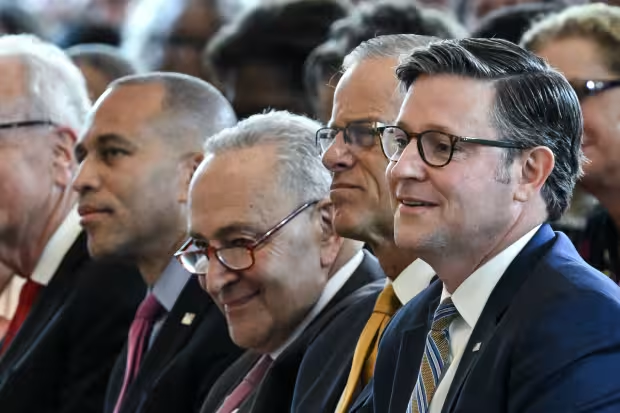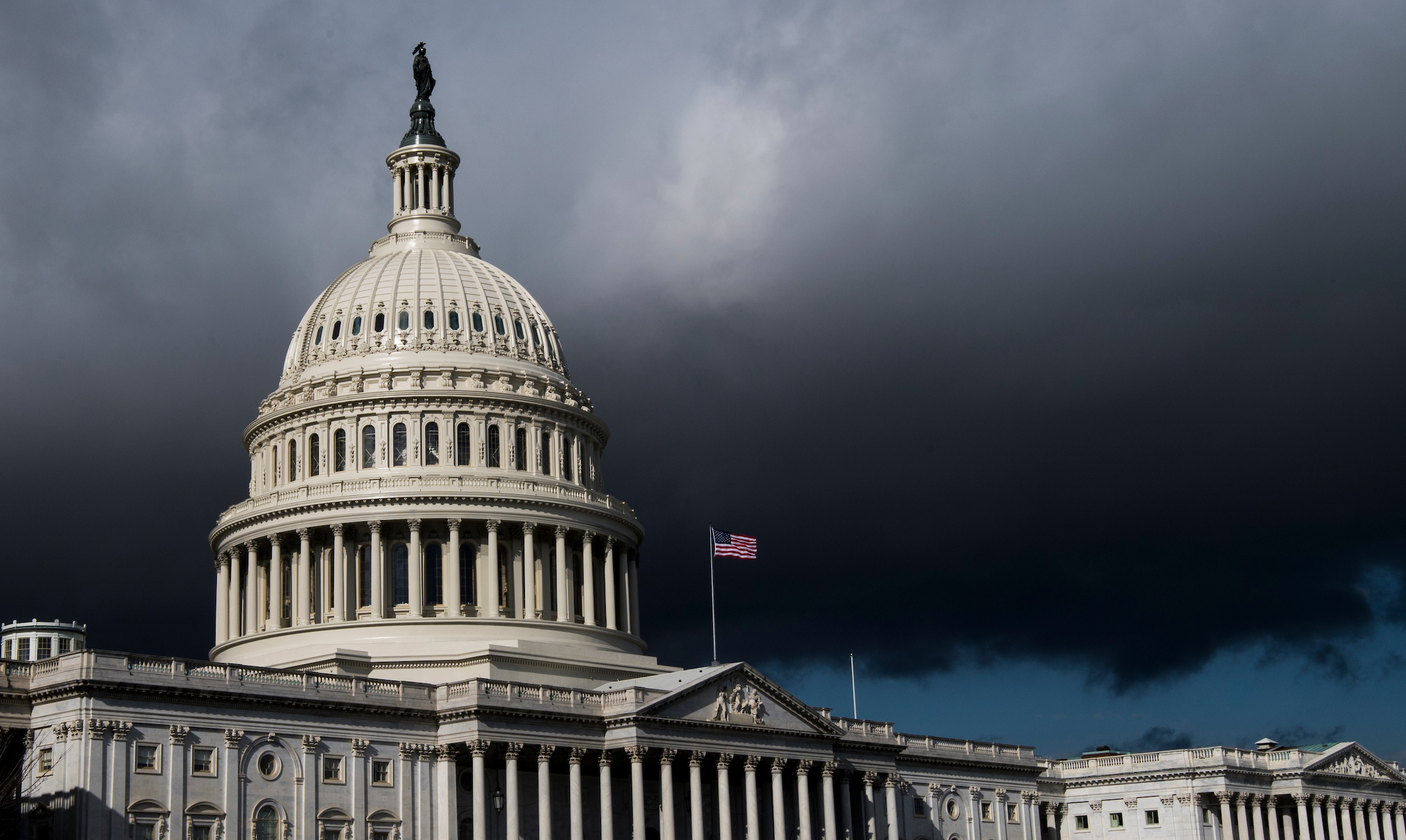Already a subscriber? Make sure to log into your account before viewing this content. You can access your account by hitting the “login” button on the top right corner. Still unable to see the content after signing in? Make sure your card on file is up-to-date.
Top US lawmakers from both sides of the political aisle are set to meet in the Oval Office on Monday in an effort to avoid a looming government shutdown.
Getting into it: President Trump, who initially resisted engaging directly with Democratic leaders, has reversed course and agreed to host a high-stakes meeting with the four top congressional leaders just one day before the funding deadline. Trump had previously scrapped a scheduled meeting with Senate Minority Leader Chuck Schumer and House Minority Leader Hakeem Jeffries, calling their demands “unserious and ridiculous.” But with the federal government on the brink of its 15th shutdown since 1981, Trump is now set to sit down with Schumer, Jeffries, House Speaker Mike Johnson, and Senate Majority Leader John Thune in a last-ditch effort to avert a crisis.

The central topic of Monday’s meeting is a stopgap funding measure (known as a continuing resolution, or CR) that would temporarily keep the government open beyond the Tuesday midnight deadline. While Republicans passed a short-term bill in the House to extend funding through November 21, it failed in the Senate, where at least 60 votes are needed. Without a deal, the government will shut down, halting non-essential services and forcing hundreds of thousands of federal employees into unpaid furloughs. The White House has already escalated the pressure by instructing agencies to prepare layoff plans, prompting concerns.
Two different views:
At the heart of the divide is a fundamental disagreement over healthcare policy. Democrats have conditioned their support for the CR on the extension of enhanced Affordable Care Act (ACA) subsidies (tax credits set to expire at the end of the year) and the reversal of Medicaid and healthcare cuts Republicans enacted over the summer. “Our position has been very clear: cancel the cuts, lower the cost, save healthcare,” said Rep. Hakeem Jeffries. Schumer added, “We are resolute in our determination to avoid a government shutdown and address the Republican health care crisis.”
Republicans, however, argue that the healthcare issues can be addressed separately and accuse Democrats of hijacking the funding process. Earlier this week, Senate Majority Leader John Thune said, “Keep the government open, and then let’s have a conversation about those premium tax credits. I’m certainly open to that. I think we all are.” GOP leaders are pushing what they call a “clean” continuing resolution that maintains current funding levels without additional policy changes. “If Democrats refuse to just pass this clean continuing resolution, that’s exactly what’s going to happen — a shutdown — and I think the Democrats are going to bear the responsibility for it,” said Vice President JD Vance on Fox News Sunday.
As both parties dig in, the blame game is escalating. “These people are crazy — the Democrats,” Trump said Friday. “So if it has to shut down, it’ll have to shut down, but they’re the ones that are shutting down.” Democrats, meanwhile, say Republicans are refusing to engage in good-faith negotiations. “If the president at this meeting is going to rant and just yell at Democrats… we won’t get anything done,” Schumer warned.
Notably, Senator Rand Paul has taken a critical stance against both parties’ approaches to the looming shutdown, condemning the spending plans from Republicans and Democrats for adding to the national debt. “The Republican proposal adds about $2 trillion in debt over the next year… The Democrat plan would add $3 trillion,” Paul said on CBS’s Face the Nation. He dismissed both as fiscally irresponsible and emphasized his opposition to deficit spending regardless of party.







